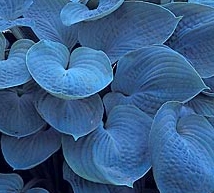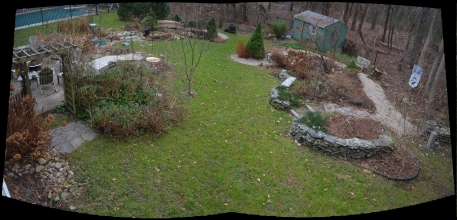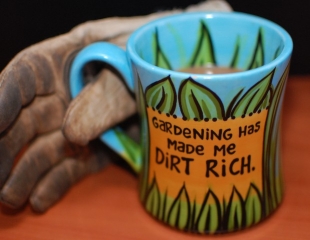Posts Tagged ‘gardener’
Garden Mind
I got the White Flower Farm Spring 2012 catalog this week. It’s a page turner as usual, with saturated floral images of garden gems in perfect flower – where the reds are redder, the greens greener and the true blues truer than life. One day, there might be a garden catalog with wilted, spent flowers going to seed. Unlikely.
My garden overwinters – stark and dreary, especially without frost or snow cover. I hope it gets cold enough to kill the bad bugs; I hope there is enough snow cover, eventually, to supplement the good stuff (my brother told me snow is the poor man’s fertilizer). But, I digress. What is really at work is stillness. No growth, just the remnants of the garden being earth bound — skeletal, essential, and creating reserves for the proper blooming time.
What I have is garden mind.
Our garden (aka, “R” Garden) sits, while last year’s beauty decomposes into next year’s growth. I see the garden’s shape from our upstairs window – the straight and curvy lines, the beds, the flow from one section to another joined by lawn, paths, steps, and bridges. I like this flow and work to refine it in my mind: firm up that edge with a low border, trim that shrub to be a better neighbor, hack that pachysandra, reset those stones, et cetera. In a process of refinement, endless tweaking shapes the garden and morphs its profile. Its essential personality, established long ago, matures incrementally, bringing charm, whimsy and nature into harmony improved by age.
Of course it’s a living thing and changes occur, apparently spontaneously, as well. Like the clumping bamboo that finally, finally decided to become the screen I imagined ten years ago. Who knew it would take this long? I suppose that’s where annuals come in. They provide the instant gratification that delights the eye and other senses. Not much mystery but adornment galore and great expectations easily met. We enjoy the splash, the visual spice, and the abundance of blooms overlaying the perennial foundation.
The garden mind dwells on ideas and suffers no toil. No: weeding, spraying, mowing, aching backs or biting no-see-ums. It sees golden possibilities; it harbors hopes and plans — flights of fancy that could occupy the whole of next season. It’s a great place to visit.
What Is Your Garden Worth?
Away from my garden, retreating in Martha’s Vineyard, MA, I came upon this thought.
A gardener uses all his senses — sight, smell, sound, touch, taste — and works within all dimensions — length, width, height/depth, density, time. Not to mention energy and soul. These variables intersect (interact) in observable and intangible ways to impose order on chaos, form on nature, compromise over competition, justice over power, knowledge over ignorance, passion over apathy, enrichment over paucity, artfulness over randomness, delight over despondency. Both solace and community draw gardeners to others’ gardens and welcome visitors to their own. Commoners and commodores exchange successes and failures; all are equal in the garden.
Gardening and the Economy
So what of “agriculture”? It is not a topic for aesthetic gardeners but for economists. It extracts value from the earth akin to mining, drilling, fishing and forestry. We mortgage our fields against their calculated yield. Gardening, on the other hand, has no measurable value. Agronomy supports our priceless folly.
Shall we leave the economy behind? The ideal of self-sufficiency promises an escape from market tyranny but we are so dependent on our interconnected systems that only delusions or extreme dedication — emphasis on cult-like extremism — could possibly break the grip we’re in. At best, we can disengage at the margins. Very few can afford the luxury of being truly “off the grid.” This is not pessimism but realism. Face it: we want the things we want. The real challenge is properly accounting for them. The market lobs unwanted costs into the future for some other accountant to deal with.
Cost/Benefit Accounting
Recognizing true costs is a starting point. Now, let’s measure value. One way economists measure it is by the cost/benefit ratio (smaller numerator or larger denominator is better). The cost/benefit of agriculture is labor plus materials over market value of the harvest. That leads us to calculate the cost/benefit for gardening as the labor and materials divided by an unfathomable benefit — for there is no market value of a garden, especially where there is no harvest. Now the problem is conventional economics.
This is not a unique dilemma. For example, we have no market value for life itself and we cringe when actuaries propose one. We have no market value either for dancing, blowing bubbles, reading to a child, laughing or mourning.
Toward a New Equation
Assuming there are two roles engaged in the valuation: gardener and observer; we can determine the value of a garden, and gardening, thus.
Assign values to these inputs:
- cost1: the materials the gardener purchases
- cost2: labor the gardener purchases and/or begrudges (annoyance costs)
- benefit1: how much it makes observer want to be in it, in Attraction Units (Au)
- benefit2: how much it makes gardener want to do it, in Au
You might assume the value is higher for the observer/visitor because his is all Attraction Units and no costs (other than opportunity costs). Forget this math — the value of benefit2 can far exceed total costs and the gardener is also an observer of her own garden (benefit1). So, the most valuable context is being both an observer and a gardener and the proper math is: (cost1 + cost2) – (benefit1 + benefit2 )/(benefit1 + benefit2). This can be reduced to cost per Au, which in the ideal, approaches zero. Or something like that… (Deej: how do I keep the numerator from going negative?)
I could muddy the waters with daffodils (tulips, roses, peas, etc.) grown for sale. Back to the cash crop equation. And what of an arboretum vs. a nursery. How much is a 300 year old conifer worth — the value of its lumber? Some things the market cannot know. We must choose how we value things.
I am sitting in the sunny front room of our retreat house. The circling shadow of a bird in flight crosses the table in front of me. My garden grows without me.
Dirt – A Love Story
It’s everywhere! We scrub it off our hands, our shoes, our personae. We think: clean = good, dirt = bad. Even gardeners succumb to dirt-riddance — we clean our gardens in the spring! But I’m telling you — dirt is your friend, not your enemy.
Here’s why.Get Smart – Eat Dirt!
Dirt harbors essential micro-organisms (like bacteria and fungi). “Yikes!“, you shriek, “That’s a good thing?“. Not just good, essential.
Soil scientists say each gram of soil (less than a teaspoonful) contains over 1,000,000,000 microbes (1 billion!), hosting over 10,000 different species. Here’s what some of these buggers do:
- grow our crops,
- convert wastes into compost,
- deliver vitamins to plants (in the “rhizosphere“),
- kill insects,
- consume toxic waste (like oil spills), and
- create soil in the first place
When soil is first made, for example after a volcano, some nutrients are missing, including nitrogen and carbon. Therefore, the first organisms to colonize the soil are generally nitrogen fixers and photosynthesizers that fix carbon. [DLC-ME]
Furthermore, a study conducted by researchers Dorothy Matthews and Susan Jenks at The Sage Colleges (Troy, NY) suggests that soil-borne germs play a role in reducing anxiety and enhancing learning. The study attracted lots of coverage, like “Can Bacteria Make You Smarter?” (Science Daily) and on Radio Netherlands “The Dirt Show“. Here the two researchers pose with dirt martinis (yuk!).
Anyway, get smart — eat dirt!
Dirt – Accidentally in Love
I began my wholesome relationship with dirt by accident, often the case with true love. I had planned a border along the front driveway and set to work removing a strip of sod about 2 feet wide and 80 feet long. I had loam delivered to create the bed where the sod once was. For expediency, I dumped the torn up sod in a low spot in the backyard; it formed a chunky mound on which I later dumped fall leaves and some additional loam on top to hold it all in place.
I finished the driveway border project, planting daylilies, astilbe and daffodils topped with a layer of bark mulch. Over the next couple of years I expanded the experimental mound in the backyard, adding a curved path with pea stone gravel, throwing in Bleeding Hearts, Oriental lilies, astilbe, a leftover Alberta Spruce, a red twig dogwood, Japanese dwarf spirea, ferns (etc.). What I found was — it didn’t matter what I planted there. Everything flourished. I had accidentally created a rich, organic home for my woodland plants! Dirt won me over and I’m accidentally in love!
I’ve since enlarged the accidental garden with yard clippings, chopped oak leaves, more loam, and barn “soil” from a nearby stable. In the expanded section, I added shrub roses, Columbine, an ornamental Japanese maple, American ginger, epimedium, sweet pepperbush (Clethra) and a stone wall. We’re happy together.
The Joy of Dirt
Back to the driveway border. It perennially struggles — its loamy bed dries out in summer because it doesn’t have enough organic material to store water for long. The day lilies come up OK, but they haven’t prospered; ditto the daffodils. Some day, I will re-visit this project and give it the tender lovin’ dirt it needs.
I’ve started another mound in the front yard: lawn clippings, chopped leaves, compost from the Marshfield transfer station (aka, the dump), and a decorative covering of bark mulch. It’s January and the mound is slumbering beneath a foot of snow, while microorganisms and worms are busily feeding and creating new dirt. Oh, joy!
Now it’s your turn — Share the dirt!
4 Hints for Getting Started in the Garden
Guest blog: Christopher Waddell (Hanson, MA). Chris has been growing his own fruits and vegetables organically for more than two decades.
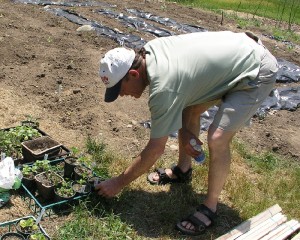
Chris Waddell in his garden
His suggestions for your success follow. He begins…
The best way to learn how to garden is to read all you can and then go out and kill every plant at least once. Try any/everything and learn from mistakes. Any hints I share were earned that way. Here are some for early in the season…
- Not yet!!!
Seeds started now languish from low sun on windowsills and in the sky. If they do take, they’ll grow long, skinny and weak way too soon to be put out.
Exception: geranium seeds. They’re slow. You’ll interplant them with veggies to ward off and kill beetles. - Read catalogs
They glow and motivate and work to get you daydreaming and planting. Paper catalogs are more chock-full of info, like planting zones, pollination, ad infinitum, than the online ones. Go online to order a copy. There are many; some with too much hype, others limited in scope or just middle retailers.
Authentic seed growers include Park Seed Co. (my favorite), Burpee, Miller, Jung, R. H. Shumway. Enjoy; then believe about half the outlandish claims. Read for what they fail to mention.
- Avoid heirloom varieties
Those are types of yore with little resistance to plant diseases and pests that have evolved over the past few decades by destroying crops. To keep these plants healthy requires tons of spraying.
Hybrids were developed to build in natural resistance to plant stressors like fungus, rust, aridity, insects. Go a season or two with your hybrids. Then try some of the old varieties.
- Go outside
Throw all the organic matter you can on your soil, like leaves, grass, seaweed, manure (any), kitchen waste. Snow is an excellent slow-release fertilizer. Then go in, get warm, browse the catalogs and dream of a sun higher in the sky.
Thanks, Chris! I mentioned gardeners’ traits in my Seeds are in post (imagination, faith, patience, diligence, hope…). Chris embodies all these and then some.
What makes your garden grow? Share some of your hints!
Seeds are in
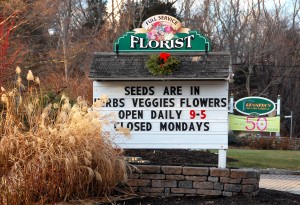
January 8, 2011 - Seeds are in
Like plants, gardeners come in many varieties, but they seem to share some common traits: imagination, faith, patience, optimism, diligence, hope…
What other gardener traits can you think of? Share your perspective.
